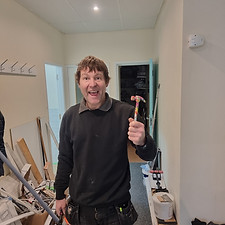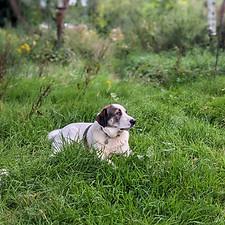
Some examples of our work
The services we provide
For examples of our work please go to the relevant page
Click the text to go to the relevant page
The manufactures we install


Our approvals relevant to heat pumps
Who We Are
Artimus Renewables, based near Lincoln, is a family-operated business focused on renewable energy installations. We specialize in heat pumps, solar PV, wind turbines, and EV charging solutions while ensuring ethical operations and meeting client expectations. Our dedication to quality installations helps create a sustainable future.
Why choose Artimus?
Take a look at our Google reviews on our Reviews page and you’ll get a good idea of how happy our customers are.
We always ensure that the installation will perform as described and that you will have a solution that meets an agreed design. The solution might not be exactly what you initially thought you wanted – that's because we won't install a poor solution just to make you happy or line our pockets. We will install the right solution for your property and your budget.
We also only fit equipment that has reliable technical support and warranty cover. This means we might not be the cheapest quote you receive but you will definitely get long-term value for money with us.
Meet the team

Steve
Bossman, when he is allowed
.jpg)
Matt
Engineer, Fran and Steve's youngest of three children

Gren
Engineer, good friend of many years

Fran
Accounts, admin, on-site catering and keeping bossman in check

Ringo
Site security

Spong
Ringo's manager
Our posts
Instagram posts
Some questions answered
How important is location for the installation of a wind turbine
For a small scale turbines, location is critical to performance.
The following provides a little more detail on the effect obstructions have on disturbing the wind flow.
When surveying a potential installation site what is key is the location in relation to hills and obstructions such as buildings and trees etc. The following diagram, taken from Futurenergy (https://futurenergy.co.uk/) literature illustrates the impact of obstructions have on creating wind flow disturbance:

To avoid wind disturbance, the turbine needs to be situated a distance 20 times the height of the disturbance away from the disturbance or be mounted on a pole twice the height of the disturbance. So, an average two-story house will disturb the wind for a distance of 180m downstream of the wind direction
What is the potential return on investment of a small scale wind turbine?
Approximate installation costs for some turbines
Britwind H1:
Britwind H5:
Britweind H11:
Britwind H15:
Ryse E5:
Ryse G11:
£7,000
£35,000 - £40,000
£170,000 - £190,000
£170,000 - £190,000
£35,000 - £40,000
£95,000 - £100,000
Approximate return on investment calculations
Ryse E5
For the following examples I have used 24pence per kWh import as a starting point with 2% and 4% inflation per year over the 20 years. I have not included annual servicing charges in the calculations.
Considering the E5, (https://www.ryse.energy/5kw-wind-turbines/) over a 20-year period. If located with an average of 5m/s clean wind speed it should generate around 138,000kWh. If the property uses all electricity generated, then this could represent a saving of around £40,000 which covers the installation cost. Now if the average wind speed is 7m/s the turbine would generate a profit of over 40K over the 20 years and if standard electricity prices increased by 4%/year the profit would increase to over 60K.
Ryse G11
For the following examples I have used 24pence per kWh import as a starting point with 2% and 4% inflation per year over the 20 years. I have not included annual servicing charges in the calculations.
Considering the E5, (https://www.ryse.energy/5kw-wind-turbines/) over a 20-year period. If located with an average of 5m/s clean wind speed it should generate around 138,000kWh. If the property uses all electricity generated, then this could represent a saving of around £40,000 which covers the installation cost. Now if the average wind speed is 7m/s the turbine would generate a profit of over 40K over the 20 years and if standard electricity prices increased by 4%/year the profit would increase to over 60K.
So, it really does boil down to the amount of electricity used by the property and the location of the proposed installation.


















































































